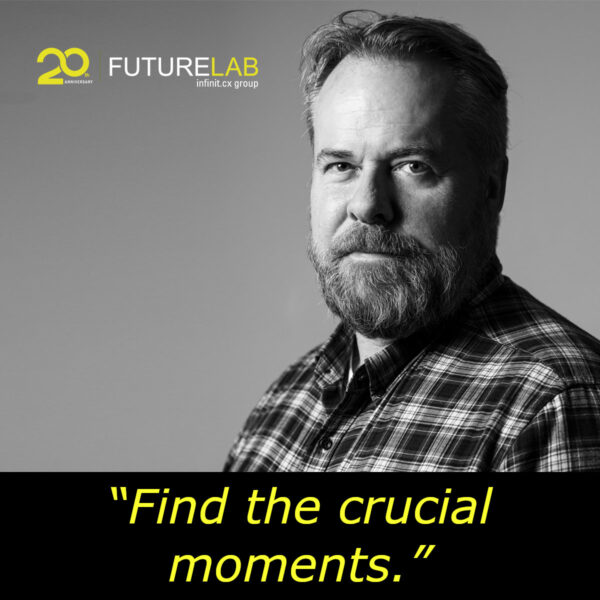In a previous post, I attempted to split the atom on what made for a great presentation.
I arrived at the conclusion that beyond some general guidelines, any format could work depending on the idea, how it catered itself to the presenter and how it delivered to its audience.
Of course, usability, utility, clarity and desirability were all important.
By looking at the same 20 popular slideshare presentations, its clear that different motives drive six distinct types of presentation formats.
It’s also annoyingly clear, presenters, even professional ones, oftentimes lack a self-awareness of what style they need to be in for their particular situation. You’ve likely seen the mismatch of style-to-objective e.g. hard-selling at a blogger conference, being too cutesy at a management meeting, looking to inspire a practitioner audience that wants to know the “how”, lecturing to a sales force about next year’s program instead of motivating them
So which of the following 6 styles is your next presentation? and do you have the right style and assets to back them up?
Presentations with emotional appeal:
I) Entertaining
- Goal – to provoke a reaction with your crowd, elicit enjoyment without particular care for message quality or impact
- Audience Need – Need to escape, blow off steam, establish a tone change, build culture/camraderie
- Format – Offsite kickoffs, Viral videos/stunts, Brand awareness, Personal journey
- Visual/Content Tactics: Cartoons, Story/chapter template, Headlines, Photo Gallery, Sight gags, Mashups, Absurdity, Interactive Games, Unprovable points/stats, Video, Audience Participation
Example: How to trade a red paperclip for a house part 1 from Kyle MacDonald
II) Persuading
- Goal – to convince a person of the quality of your offering or position, to get people to act in a preferred way, to show as superior between different options
- Audience Need – Need to be convinced, Build superiority of your argument, See evidence of multiple sides, Creating additional validation
- Format – Sales presentations, Product launches, Agency pitches, Competing theories, Competitive beliefs
- Visual/Content Tactics – Tables, Case Studies, Testimonials, Criteria, Amazing Facts, Side by side Comparison, Magic Quadrant, Strategy Map, Leading Questions, Concentric Circles, Venn Diagrams, Clustering
Example: Search Kicks Display in Effectiveness by Augustine Fou PhD from Dr Augustine Of
III) Evangelizing
- Goal – to immerse people in your point of view and inspire them to rally around and feel linked to it
- Audience Need – need to become part of something bigger, need to feel something resonate deeply
- Format – Employee Town Halls, Customer Celebrations, New Brand Positioning, Impactful Change, Tribal Recruitment
- Visual/Content Tactics – Tip of the Iceberg, Pattern Recognition, New Definitions, Historical Progression, Future Projections, “Did you know”, “Inspiring Quotes”, Call to Action, Immutable Laws, Formulas, T-shirtable Slogans, Grand Reveal, Storytelling, We’re not them, Alarmist provocations, Pyramid Factors, Personality Profiles, If You Believe This…You Must
Example: THIRST from Jeff Brenman
Presentations with rational-appeal
I) Analyzing
- Goal – to present results without determining conclusions or placing a subjective value on the information
- Audience Need: Need to understand the facts, Need to sift through the evidence, Need to share information before conclusions
- Format – Presentation of financial results, Just breaking research results/polls, Stimulus for Review
- Visual/Content Tactics – Pie Charts, Bar Charts, Scatterplots, Line Charts, Data Maps, Rankings, Histograms
Example: 7 Top Stocks for 2013 from The Motley Fool
II) Educating
- Goal – to provide insight and teach audience based on evidence, to throw light onto a new/unfamiliar subject
- Audience Need – need to know what happened, provide a summary of learnings, develop institutional knowledge
- Format: Research Conclusions, Post-Project Evaluations, Lunch and Learns, Audits
- Visual/Content Tactics – Matrix Diagrams, Lists, Tree Diagrams, Mindmaps, Force-field Diagrams, , Concept maps, Callouts, Visual Evidence, Examples Brought to Life
Example: Facebook, The Perfect Startup from faberNovel
III) Coaching
- Goal – to provide a mentored, step-by-step learning experience
- Audience Need – need to learn to do it themselves, solicit mentorship and past experience
- Format – Training Workshops, Mentoring, DIY Tutoring,
- Visual/Content Tactics – Cycle Designs, Critical Paths, Decision Trees, Process Chains/Steps, Gantt Charts, Sequential Pictures, Watchouts/Callouts, Insider Tips
Example: A Content Strategy Roadmap from Kristina Halvorson




